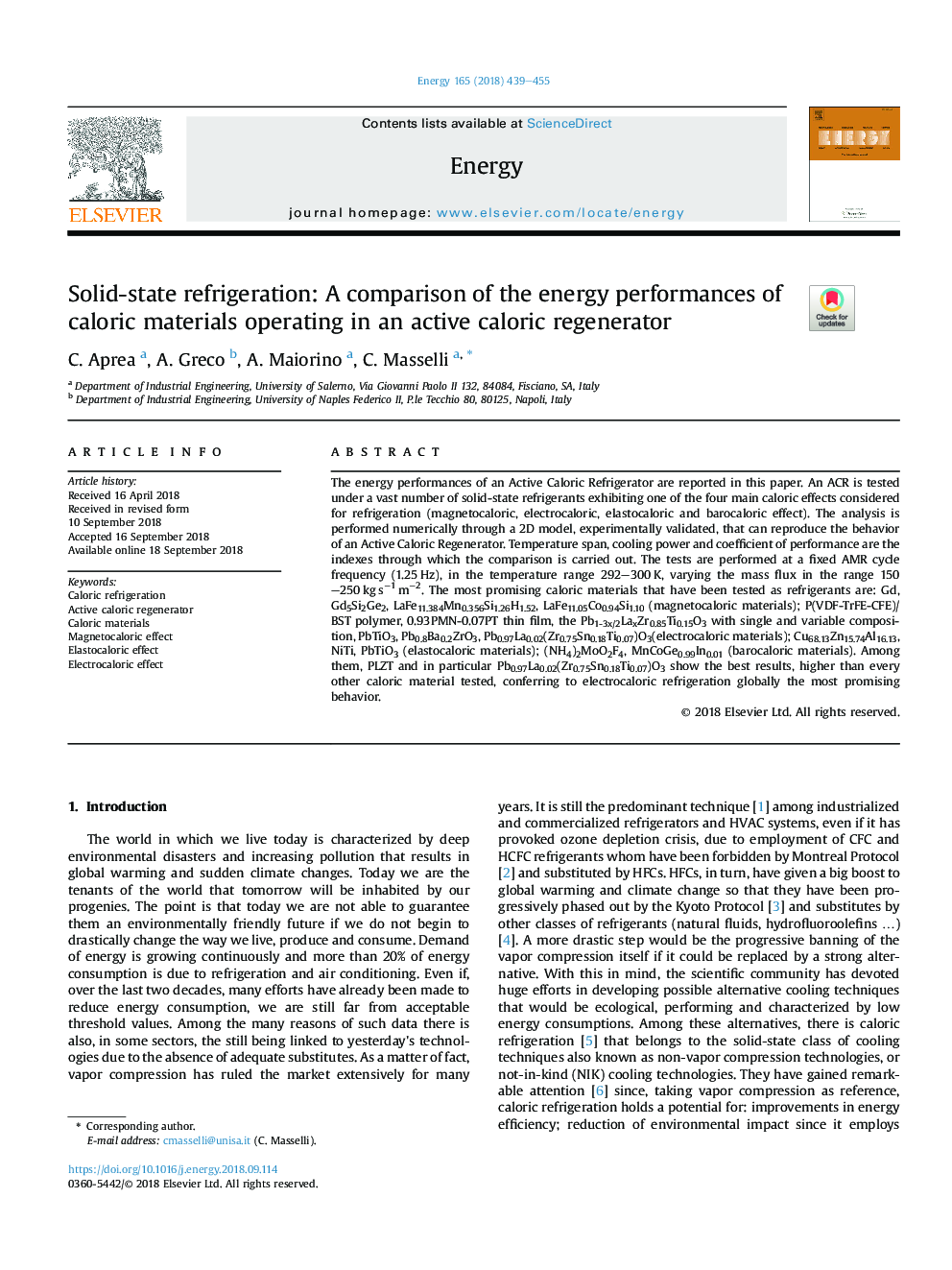| Article ID | Journal | Published Year | Pages | File Type |
|---|---|---|---|---|
| 10156240 | Energy | 2018 | 17 Pages |
Abstract
The energy performances of an Active Caloric Refrigerator are reported in this paper. An ACR is tested under a vast number of solid-state refrigerants exhibiting one of the four main caloric effects considered for refrigeration (magnetocaloric, electrocaloric, elastocaloric and barocaloric effect). The analysis is performed numerically through a 2D model, experimentally validated, that can reproduce the behavior of an Active Caloric Regenerator. Temperature span, cooling power and coefficient of performance are the indexes through which the comparison is carried out. The tests are performed at a fixed AMR cycle frequency (1.25â¯Hz), in the temperature range 292-300â¯K, varying the mass flux in the range 150-250â¯kgâ¯sâ1â¯mâ2. The most promising caloric materials that have been tested as refrigerants are: Gd, Gd5Si2Ge2, LaFe11.384Mn0.356Si1.26H1.52, LaFe11.05Co0.94Si1.10 (magnetocaloric materials); P(VDF-TrFE-CFE)/BST polymer, 0.93PMN-0.07PT thin film, the Pb1-3x/2LaxZr0.85Ti0.15O3 with single and variable composition, PbTiO3, Pb0.8Ba0.2ZrO3, Pb0.97La0.02(Zr0.75Sn0.18Ti0.07)O3(electrocaloric materials); Cu68.13Zn15.74Al16.13, NiTi, PbTiO3 (elastocaloric materials); (NH4)2MoO2F4, MnCoGe0.99In0.01 (barocaloric materials). Among them, PLZT and in particular Pb0.97La0.02(Zr0.75Sn0.18Ti0.07)O3 show the best results, higher than every other caloric material tested, conferring to electrocaloric refrigeration globally the most promising behavior.
Related Topics
Physical Sciences and Engineering
Energy
Energy (General)
Authors
C. Aprea, A. Greco, A. Maiorino, C. Masselli,
